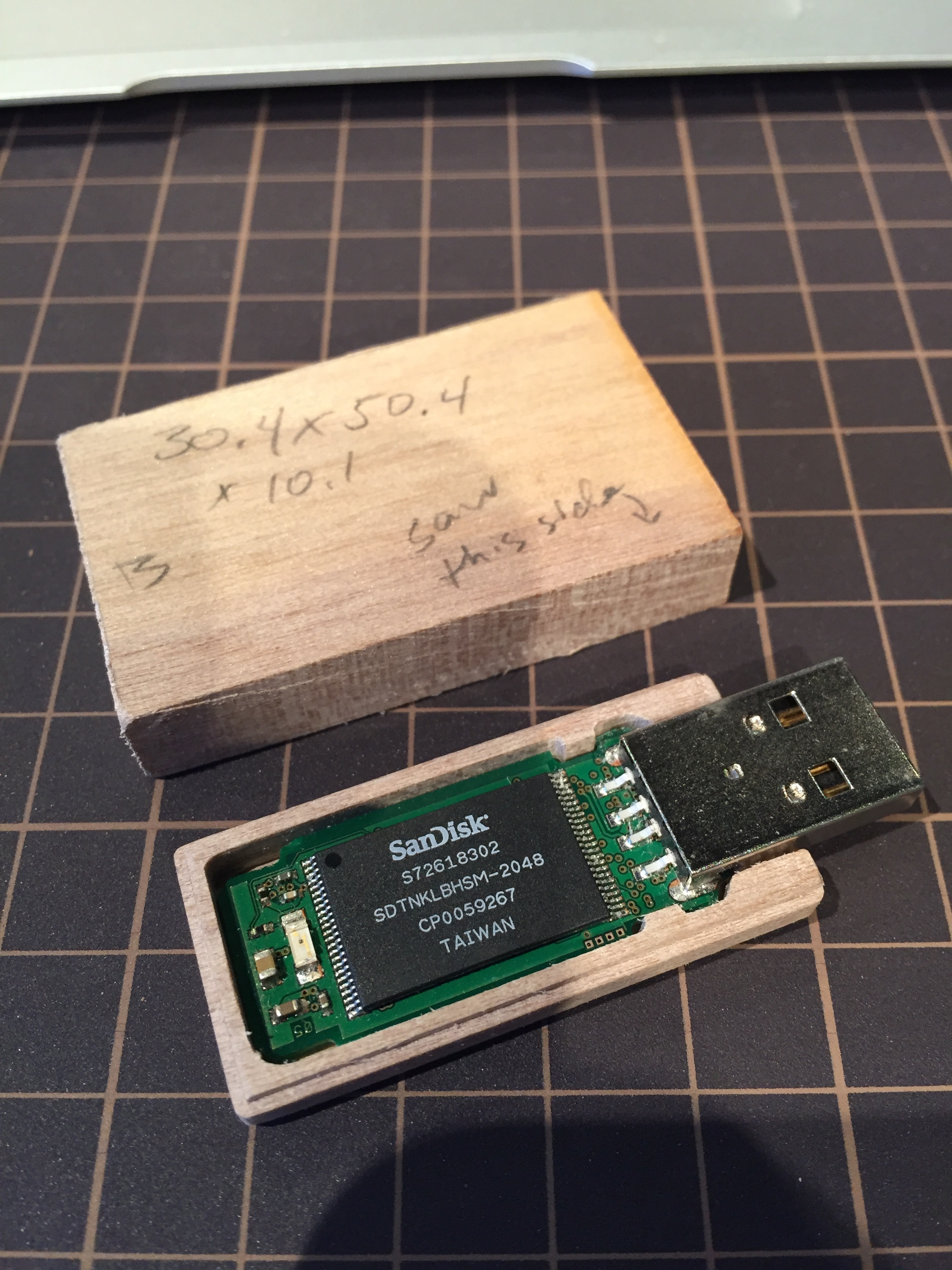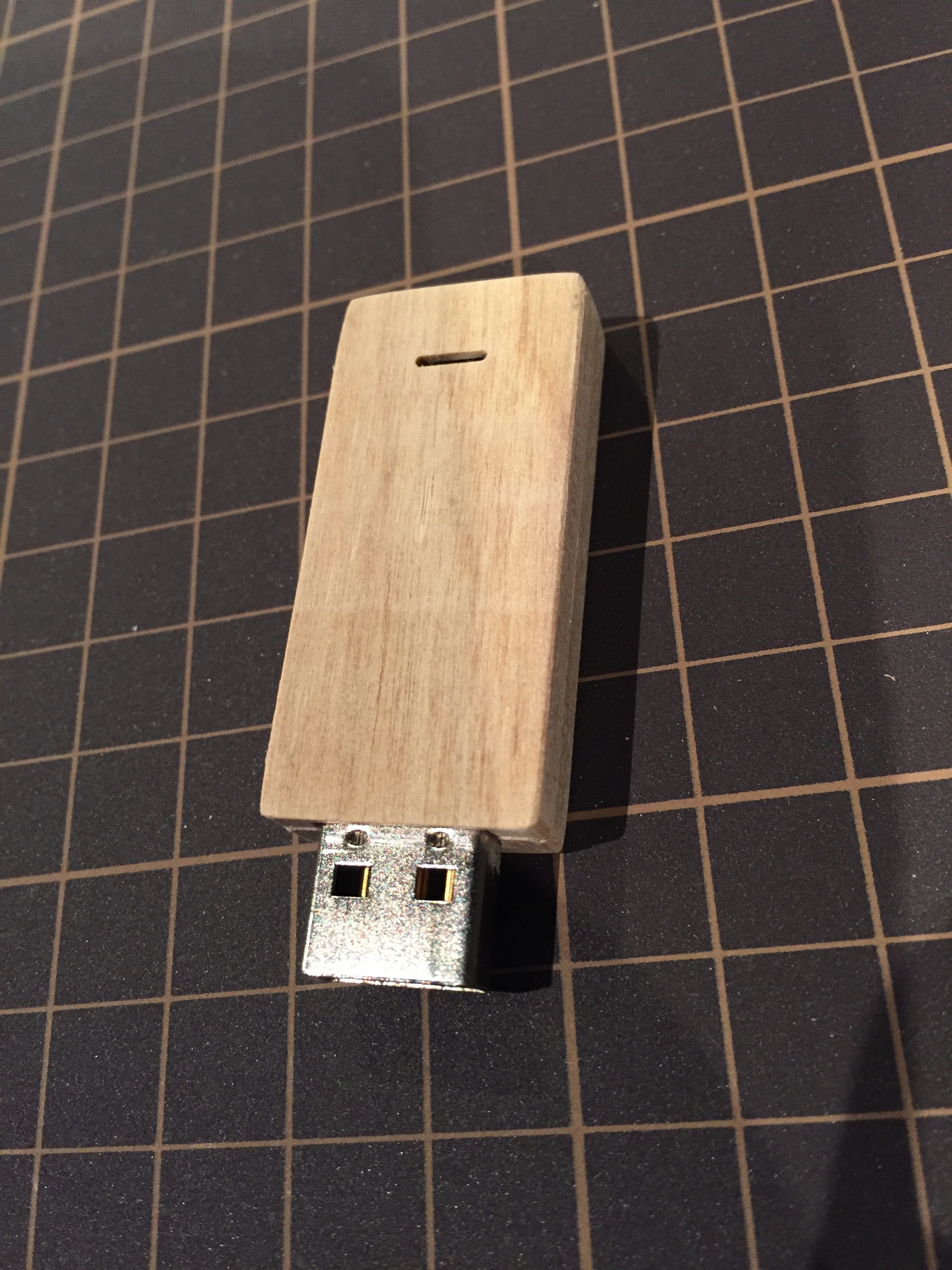This is a draft of a blog post that I wrote for MTRL KYOTO. It doesn't go into much detail but I thought it was interesting enough to post here too.
Hi, I'm Connor, one of the directors here at MTRL KYOTO. Part of my job as director is making simple projects using our fabrication tools to serve as examples of things you can make here. So I'll be writing about some of those projects every now and then.
Today I want to share a little bit of the process of making this wooden USB drive.
The first step, as with any project, was to choose my materials and my tools. I knew that I wanted to use a piece of Japanese wood called Hoh that I had been saving for a couple months. The wood was pretty flat but too thick to use with the laser cutter, plus I wanted it to have a uniform look, not box jointed like laser cutter made enclosures, so I went with the CNC machine, a KitMill Qt100 from Original Mind, a Japanese mill manufacturer.
I jumped into Fusion 360 to start making my 3D model. First I broke off the old plastic case and modeled the insides of the USB drive. I then designed the enclosure around that so that it would fit snugly inside.
Next, using a handsaw I cut a couple of small blocks of wood, one for each half of the enclosure, measured both blocks and used those dimensions to start generating some toolpaths. Toolpaths are basically protocols that tell the CNC machine how to move, how fast to move, and what endmill to use. Once I finished my toolpaths and simulated them, I exported them as gcode. Gcode is basically just a long list of coordiates. Move left 2 mm, move back 1 mm, and so on. The CNC machine reads this list and follows the commands exactly.
Once I had my gcode exported and saved, I took it over to the CNC machine, loaded the file and pushed go. It took about 30 minutes total to finish both halves of the enclosure. The finished enclosure snapped together perfectly and held together even without glue, but just to be safe I attached them with a little glue and sanded everything nice and smooth. A few weeks later I picked up a nice piece of Japanese cherry and decided to make a new enclosure with a slightly harder wood. I think I prefer the cherry to the Hoh, but I've got a bunch of other types of wood I want to try so I might make a few different versions!






